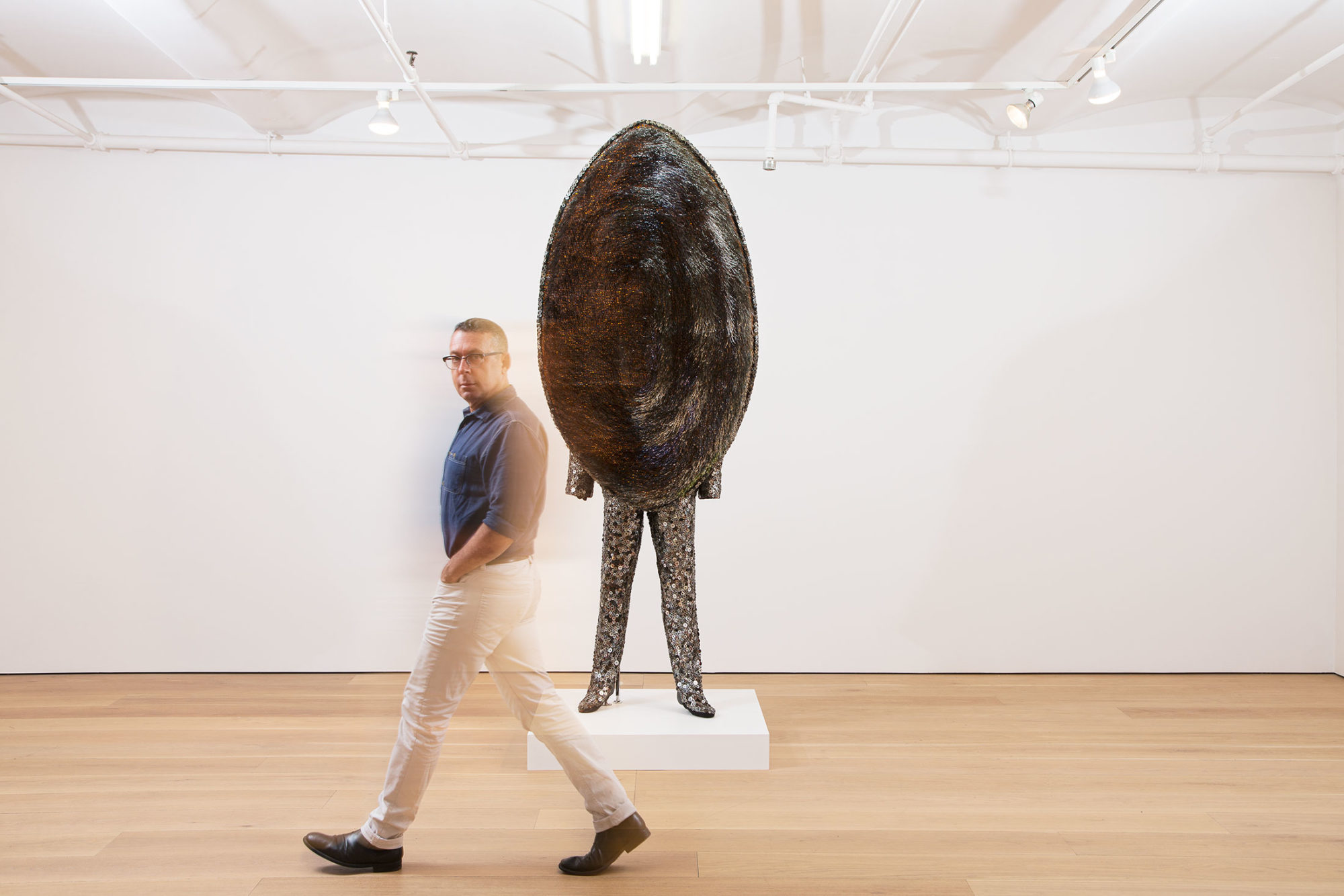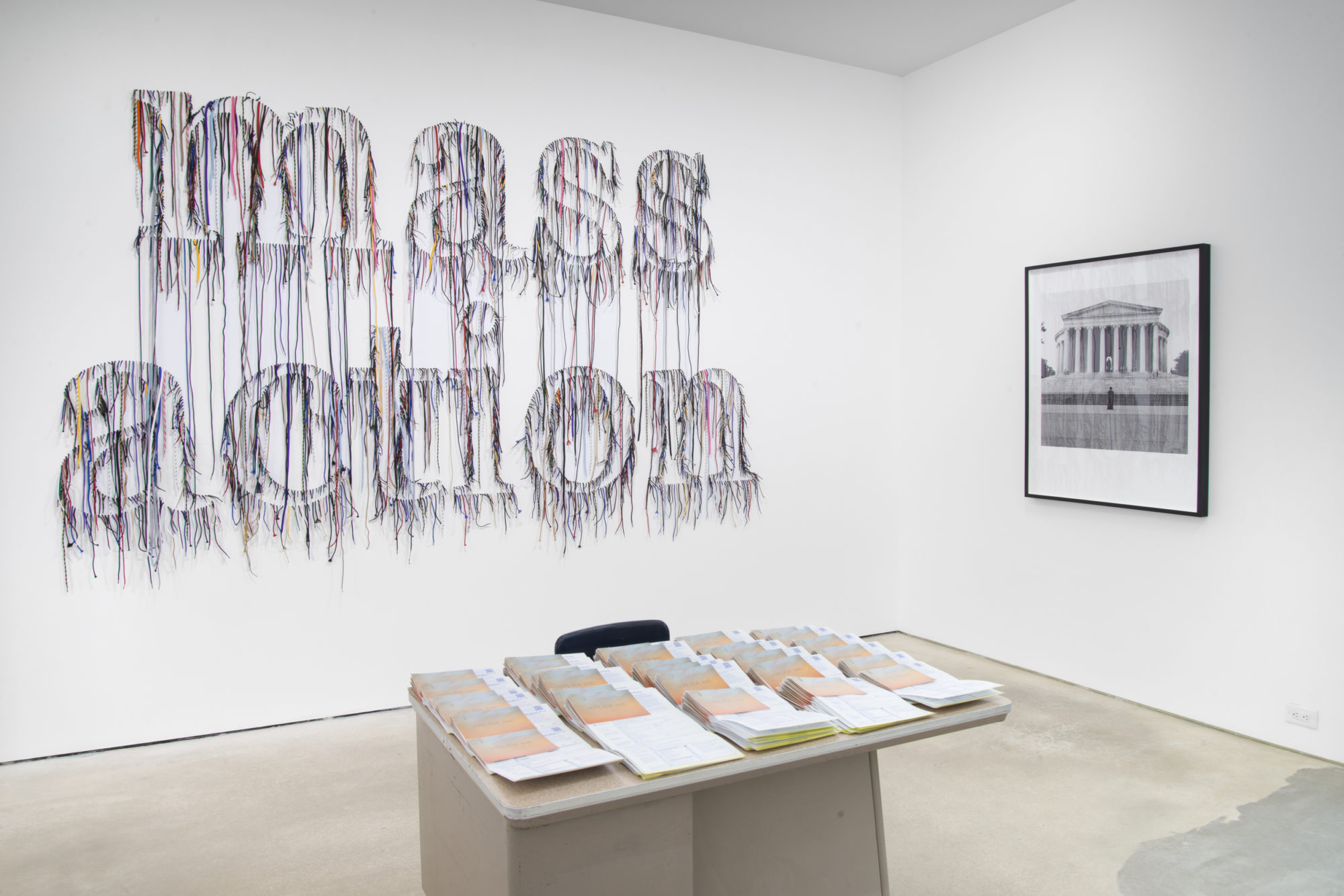Based out of Chelsea since the 1990s, Jack Shainman has less of a high profile than many of his market-obsessed neighbors. Not one to fret over art fairs or auction prices, he has a long history of choosing artwork with substance and lasting appeal over work that garners fleeting attention through shock value or bluster. He has often gravitated toward artists whose work addresses or prompts questions and reflections around race, like Carrie Mae Weems and Malick Sidibe—but not necessarily ones who are overtly political, like Lynette Yiadom-Boakye. This summer’s group show, however, “For Freedoms” (through July 29), confronts the current political environment with a frankness rarely broached in the art world. Spanning both of Shainman’s Chelsea spaces, it was organized by Hank Willis Thomas and Eric Gottesman as a way to promote their newly founded super PAC, the first-ever to be started and backed by artists. Featuring commissions from more than 50 contributors, including Rashid Johnson, Mickalene Thomas, and Dread Scott, it also serves as an office for the growing initiative, which will eventually turn the works into advertisements to be displayed across the country. Meanwhile, Shainman’s two-year-old upstate New York space, The School, in Kinderhook, has four mini-solo shows up through the season, following massive solo exhibitions by El Anatsui in 2015 and Nick Cave in 2014.
Jack Shainman
The seasoned Chelsea art dealer talks super PACs, Hank Willis Thomas, and his love affair with his new space, The School, in Kinderhook, New York.
Interview by Rachel SmallPortrait by Ogata August 18, 2016

“For Freedoms” is certainly one of the most interesting and pertinent shows to come along that deals with the election.
It really did open my eyes about [the process of] forming a super PAC and the regulations. I’m no expert, that’s for sure, but I understand a little bit more about it. What I thought was encouraging was his idea to give other people a voice and start conversations. Hank likes to give artists a voice, and he loves other artists’ work. Some artists like their own work and some like maybe one other artist, Picasso or Michelangelo. And then there’s Hank, who is showing new work all the time and excited about what other people are doing, but still keeping his own vision.
So it’s been this parallel process of arranging the show for the gallery and setting up the super PAC. How did that happen?
Originally, it was going to be the office and limited edition pieces that were going to fund the super PAC. One thing led to another and artists became excited about it, and suddenly, prominent artists were willing to give works. (The artists are all still getting their commission, so it wasn’t asking for free artworks.) There was an outpouring.
As you started seeing these really strong works and ideas come in, were there any that particularly surprised or intrigued you?
I don’t want to get in trouble! Hank and Eric were very aware of not inviting too many of my artists into the show. They didn’t want it to seem nepotistic. But there’s one artist I work with, Jackie Nickerson. She took the photograph “Flag” [2015], of a black man burning the Confederate flag. There’s such an interesting backstory. She was trying to do a photoshoot for her work with two gentlemen. They were in Arizona on the side of the road in the middle of nowhere—no towns around, nothing—taking pictures, and the police showed up and said, “What are you doing?” She explained, “Well, I’m a photographer, and I’m here taking pictures,” and they left. Five minutes later, a state trooper showed up and said, “What are you doing?” “I’m a photographer.” Five minutes after that, the park police arrive. “Do you understand you need a permit to take pictures on public land?” They got put in jail. This is in Arizona, so it’s a white woman with two young, good-looking black men. After they got out, [while] leaving town as quickly as they could, they stopped at this convenience store. Jackie noticed they were selling Confederate flags next to the cash register. So she bought one, after this experience. Driving out of town, they passed the spot where they had been, and Jackie pulls the car over and says, “Let’s burn the fucking flag.” That’s what happened. That for me had an incredible amount of resonance in terms of the whole project. When I showed the photo to Hank and Eric, their reaction was as strong as mine.
You’ve done a lot of great projects with Hank in the last few years, like last spring’s solo show “Unbranded: A Century of White Women,” which received a lot of attention.
I think something like that really showed Hank as a big artist because it wasn’t his comfort zone, white women. It meant a lot. I think Hank is really quite an amazing artist, really brilliant. I have learned so much from Hank about issues of race and color, everyday and constantly.
On a separate topic, you founded The School in that enormous former school building in Kinderhook, in upstate New York, in 2014. It’s not the most obvious place to open an unconventional space like that. How did it come about?
I’ve always had this dream to have a big space, partially for storage, but also because I love collecting art and I love living with art. In New York City, it’s hard, because people live in smaller places and a lot of things go in storage and then you never see them again. Another dream was that I wanted a farm upstate, which I got right outside of Kinderhook 16 years ago. The School is a federal revival building built in 1929, and inaugurated by F.D.R. in 1931. It’s the largest building in the town. I loved it because it was so out of scale for the town, but majestic, and I loved the federal revival [style]. I’m driving by one day, and there’s a “for sale” sign. I had to go see it. I never imagined that it would work out. Then I went to see it and made an offer on the spot. At that time, we were were pleasantly naïve because, although I had done renovations in New York, it was never on that scale. We were fortunate to work with the late architect Antonio Torrecillas. I mean, I just love it. I still go there and can’t believe it. It’s ours, and we actually did it.

